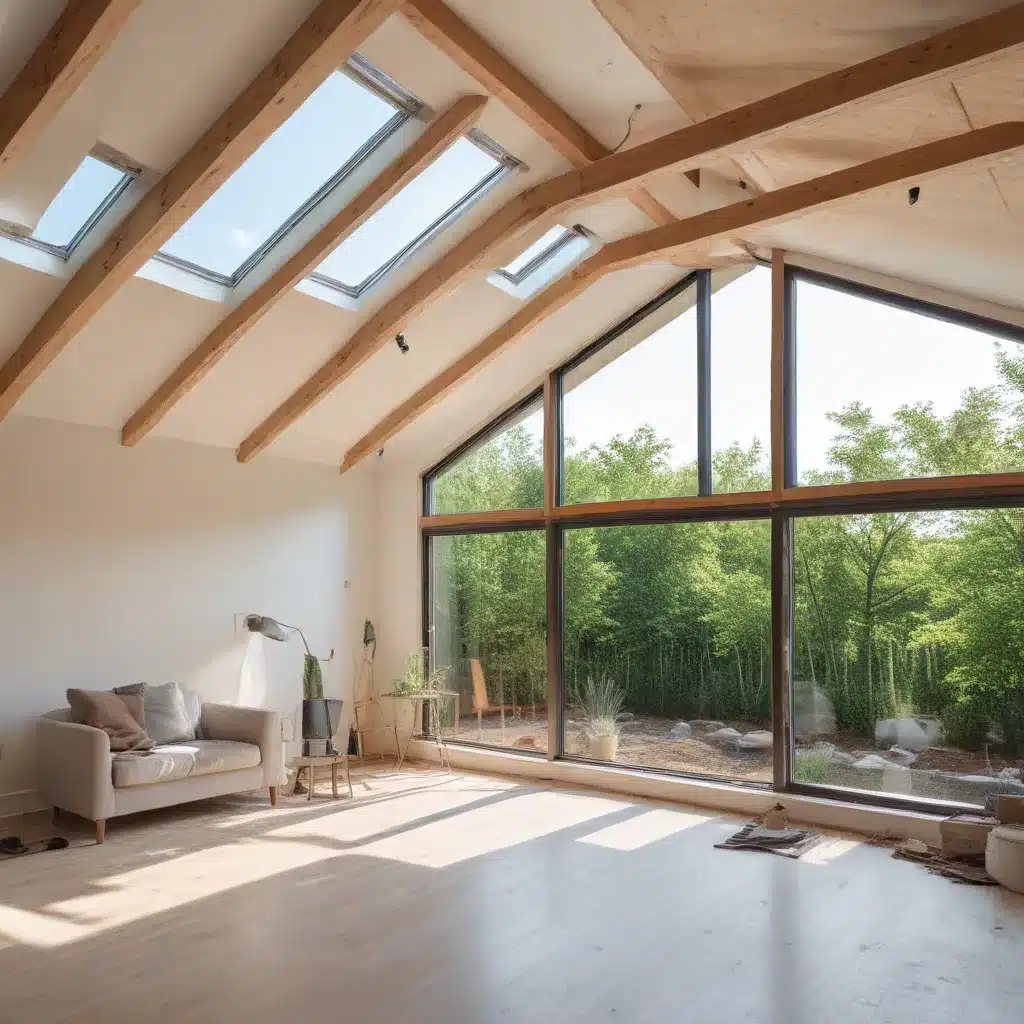
As an experienced home improvement consultant writing for Reluctant Renovator, I’m excited to share strategies for incorporating renewable energy into your home renovation projects. Whether you’re looking to boost energy efficiency, reduce your carbon footprint, or future-proof your home, renewable energy solutions can be a game-changer.
Renewable Energy Options
When it comes to home renewable energy, the leading technologies are solar power, wind power, and geothermal energy. Each option has its own unique benefits and considerations, so let’s dive in.
Solar Power
Solar power is by far the most prevalent and accessible renewable energy source for homes. Photovoltaic (PV) solar panels convert sunlight directly into electricity, reducing your reliance on the grid. PV systems can be installed on rooftops, building facades, or even as standalone structures.
One of the biggest advantages of solar is its ability to generate zero-emission electricity right at your home. This not only reduces your carbon footprint but can also lower your utility bills significantly over time. Additionally, many governments offer financial incentives like tax credits or rebates to encourage solar adoption.
However, the initial upfront cost of a solar system can be a deterrent for some homeowners. It’s important to weigh the long-term savings against the initial investment. Factors like your local climate, roof orientation, and shading can also impact the optimal size and efficiency of a solar array.
Wind Power
While not as common as solar, wind power is another viable renewable energy option for homes, especially in areas with consistent wind patterns. Small-scale wind turbines can be installed on a home’s roof or in the yard to generate electricity.
The primary benefit of wind power is its reliability – wind is often more consistent than sunshine, providing a steady energy source. Wind turbines also have virtually no operational costs once installed. Furthermore, the visual appeal of a windmill can add an inspiring, eco-friendly touch to a home’s exterior.
However, the noise and vibration generated by wind turbines, as well as the need for sufficient open space, can be concerns for some homeowners. Careful site selection and turbine design are crucial to mitigate these issues.
Geothermal Energy
Geothermal energy taps into the natural heat stored within the earth’s crust to provide both heating and cooling for a home. Ground-source heat pumps extract this heat and transfer it indoors, making geothermal an efficient alternative to traditional HVAC systems.
The primary benefit of geothermal is its consistently high efficiency, often outperforming air-source heat pumps by 30-50%. Geothermal systems also have minimal maintenance requirements and can last for decades. Additionally, geothermal energy has a low environmental impact, since it doesn’t rely on fossil fuels.
The main drawback of geothermal is the high upfront cost of installation, which includes drilling or digging for the ground loops. However, the long-term energy savings can often offset this initial investment over time.
Energy-Efficient Upgrades
Alongside renewable energy integration, there are several energy-efficient home renovations that can dramatically improve your property’s sustainability:
Insulation Improvements
Upgrading insulation levels in walls, attics, and crawl spaces helps retain heated or cooled air, reducing the strain on your HVAC system. Look for insulation with a high R-value, which measures its thermal resistance.
Windows and Doors Replacement
Swapping out old, drafty windows and doors for energy-efficient models can make a significant difference in your home’s thermal performance. ENERGY STAR-certified products are designed to minimize air leaks and transfer.
Heating and Cooling System Upgrades
Replacing outdated furnaces, air conditioners, or heat pumps with high-efficiency alternatives can dramatically cut your energy consumption. Variable-speed and smart HVAC systems are particularly effective at optimizing performance.
Eco-Friendly Materials
When renovating your home, consider using sustainable building materials that have a lower environmental impact:
Sustainable Building Materials
- Bamboo – A fast-growing, durable alternative to traditional wood.
- Reclaimed Wood – Repurposed from old structures, reducing waste.
- Natural Stone – Long-lasting and recyclable materials like slate or limestone.
Recycled and Repurposed Components
- Salvaged Fixtures – From light fixtures to sinks, reusing existing pieces saves resources.
- Upcycled Furniture – Giving new life to old pieces through creative refurbishing.
- Repurposed Building Elements – Incorporating reclaimed beams, bricks, or other structural components.
Smart Home Integration
Integrating smart home technology can enhance the efficiency and functionality of your renewable energy system:
Automated Energy Management
- Programmable Thermostats – Automatically adjust temperatures based on occupancy and schedules.
- Smart Lighting Controls – Dim or turn off lights when rooms are unoccupied.
- Energy Monitoring Devices – Track real-time energy usage to identify optimization opportunities.
Intelligent Home Systems
- Integrated Appliances – Coordinate with renewable energy sources to run during peak generation.
- Remote Access and Control – Manage your home’s systems from anywhere using a smartphone or tablet.
- Renewable Energy Integration – Seamlessly combine solar, wind, or geothermal systems with smart home features.
Long-Term Sustainability
When planning your sustainable home renovation, it’s important to consider the long-term environmental impact and increased property value.
Reducing Environmental Impact
- Water Conservation Strategies – Install low-flow fixtures, implement rainwater harvesting, or incorporate drought-tolerant landscaping.
- Waste Minimization and Recycling – Divert construction materials from landfills through strategic waste management.
- Landscaping with Native Plants – Reduce the need for irrigation and maintenance while promoting biodiversity.
Enhancing Property Value
- Increased Energy Efficiency – Improved insulation, windows, and HVAC systems can lower utility bills and make your home more attractive to buyers.
- Reduced Utility Costs – Renewable energy systems provide long-term savings that can be a selling point.
- Eco-Friendly Resale Appeal – Homes with sustainable features are increasingly in demand, boosting resale value.
Whether you’re tackling a whole-home overhaul or a targeted renovation, incorporating renewable energy and energy-efficient upgrades can transform your property into a sustainable, future-proof haven. By considering the environmental, economic, and social benefits, you can create a comfortable, cost-effective, and eco-conscious home that aligns with your values. For more inspiration and renovation guidance, be sure to visit Reluctant Renovator.



